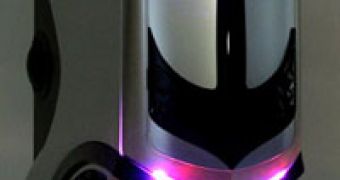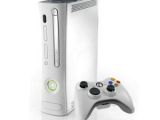Welcome to the third part of this brief guide of the computer history. This article is going to cover the last decade of the 20th century, as well as recent and present-day orientations. I will also mention a lot of peripherals, which largely improved the versatility and the processing capacity of the PC beginning with the 1990s.
The previous article stopped somewhere in late 1989 and early 1990. To better link Part 2 to Part 3 it is interesting to point out that in 1988, Steve Jobs left Apple to form the NeXT Company. NeXTStation workstation computer went on sale for the sake of a new concept defined as "interpersonal" computing, according to Steve Jobs himself. The NeXTStation was meant to be a new computer for the 1990s and it is remembered as the first personal computer to incorporate a drive for an optical storage disk, a built-in digital signal processor that allowed voice recognition and object-oriented languages to simplify programming. This NeXT model was powered by Motorola 68030 microprocessors, 8 megabytes of RAM, and a 256-megabyte read/write optical disk storage. The NeXTStation was somewhat a commercial failure, and unfortunately, NeXT had to shut down hardware operations in 1993. Steve Jobs, however, managed to return to Apple, and we still see him introducing cool gadgets and powerful PC models.
The early 1990s brought the standardization of CD-ROMs and CD/RW optical drives. These were first included in desktop computers, slowly becoming available to laptops and notebooks as well. Although introduced in 1982, the CD-ROM was mostly used for audio during the 1980s (and also video as the LaserDisc), and then for computer data such as operating systems and applications into the 1990s. Another popular use of CD ROMs in the 1990s was multimedia, as many desktop computers started to come with built-in stereo speakers capable of playing CD quality music and sounds with the SoundBlaster sound card on PCs. In the mid 90s, CD/RW drives started to replace standard CD-ROM drives. I know you might be already tired of IBM, but they sure came up with a bunch of novelties in the 1990s too. The Big Blue introduced its successful ThinkPad series at Comdex 1992 using designators 300, 500 and 700. The 300 series stood for "budget", the 500 series for "midrange" and the 700 series for "high-end". This designation continued until the late 1990's when IBM introduced the T series, followed by the A and R series.
Intel revealed the Pentium microprocessor as the fifth-generation x86 architecture developed by Vinod Dham. Pentium was the successor to the 486 line, and was first shipped on March 22, 1993. The Pentium series continued with the Pro version (1995), Pentium II (1997), Pentium !!! (1999) and Pentium 4(2000) which was discontinued on July 27, 2006 and replaced by the Core 2 line-up. The M, D and Extreme Edition are variations of the same Pentium 4 architecture.
In 1994, the Zip drive was introduced by Iomega as a medium-capacity removable disk storage system. It aimed to replace the standard 3.5 inch floppy disk but failed to do so due to weak market penetration? Before the Zip was introduced, SyQuest was popular in the market of removable media, but its devices remained expensive and largely unsuccessful due to reliability issues. You can still find some Zip drive models nowadays, but they surely don't stand a chance against CDs and DVDs as they only reach 2 GB storage capacities.
Remember those spiffy Amiga, Commodore and Atari systems I talked about in the previous articles? Well, these three as well as some smaller companies which produced the renowned Sinclair and Amstrad systems were obliterated by strong IBM PC clone makers and a low prices war as soon as the mid 1990s. With less competition than ever before, Dell found the opportunity to rise to high profits and success, introducing low-cost systems targeted at consumers and business markets using a direct-sales model. By the end of the 1990s, Dell managed to surpass Compaq as the world's largest computer manufacturer, and in 2006, we see it holding true to these achievements.
In 1994, Apple introduced the Power Macintosh series of high-end professional work stations for desktop publishing and graphic designers. These new computers made use of new Motorola PowerPC processors as part of the AIM alliance, to replace the previous Motorola 68k architecture used for the Macintosh line. During the mid '90s, the Macintosh recorded a relatively low market share, but the powerful workstation remained as the primary choice for creative graphics and publishing professionals.Be Inc released the BeBox computer, which used a dual PowerPC processor running at 66 MHz, and later 133 MHz and integrated the BeOS (Operating System). The BeBox became one of the notable failures of the 90s, with fewer than 2000 units produced between October 1995 and January 1997, when production was ceased.
The DVD (digital versatile disc) was officially introduced in 1995. DVD players started appearing on higher-end, usually more expensive, desktop and laptop computers at first and eventually on consumer computers into the early 2000s. The HD-DVD and Blue-Ray Disc standards, which are meant to replace the DVD format, started to appear in late 2006 and are expected to become widely spread as soon as Q4 2007.
We get back to Apple for a moment to point out a difficult crisis that triggered the return of Steve Jobs. Because IBM set the trend with its acclaimed PC series and later the IMB PC cloners propelled this ever-growing market, Apple was close to become bankrupt by 1996. This failure is also due to the introduction and the immense support of Microsoft's Windows 3.0 and Windows 1995. Steve Jobs returned to Apple in 1997, and his ingenious maneuvers brought Apple back into profitability. Firstly, he introduced the Mac OS 8 operating system for Macs. Then, he managed to release the PowerMac G3 and iMac computers for the professional and home markets. The iMac sold several million units and is still in production as of 2006 using a different form factor. In order to bring everything up to present standards, Apple recently released the Mac OS X, iLife and iBook. In 2006, Apple also struck a deal with Intel to include its latest microprocessors in all Macintosh products, leaving Motorola with a fat lip.
The USB (universal serial bus) port was introduced in 1996 for easy plug and play connectivity to devices such as digital cameras, video cameras, personal digital assistants, printers, scanners and practically any peripheral that you can think of. All present-day computers for the consumer market include at least 2 USB ports.
In the 1990s, AMD (Advanced Micro Devices) evolved from Intel microprocessor-cloner into the world's second biggest desktop microprocessor maker. The 1980s and early 1990s microprocessor clones (8086, 80286, 80386, Am486) made way for the K family in 1995. It is believed that the "K" was a reference to "Kryptonite" - the only substance that could harm Superman - and this can be seen as a clear reference to Intel which was dominant on the microprocessor market back then. The K5 processor was meant to compete with Intel Pentium and ever since, AMD included a factor that shows how its processors do against Intel's. K6 was introduced in 1996 and was followed by the K7 architecture in 1999. The K8 is known to be the most important revision of the K family and the most notable features are the addition of a 64-bit extension to the x86 instruction set, the incorporation of an on-chip memory controller and the Direct Connect architecture. Thus, in 2003, AMD shipped its Opteron and Athlon64 64-bit based microprocessor line for desktop and server computers. The K8 architecture is still used by present-day AMD microprocessors.
Following AMD's example, IBM released the 64-bit based PowerPC 970 for Apple's high-end PowerMac G5 systems, later in 2003. Intel, in 2004, reacted to AMD's success with 64-bit based processors, releasing updated versions of their Xeon and Pentium 4 lines. 64-bit processors are common in high-end systems, servers and workstations, where there is a demand for more speed and reliability, but are slowly becoming more popular in consumer desktop systems because of the lack of support from the software developers.
In the early 2000s, wireless devices began to become increasingly more popular as many consumers started installing their own wireless home networks. Many respectable computer and laptop brands tend to make WIFI a standard for their products. In the same rhythm, LCD displays started to replace CRT monitors, the price of the thin displays becoming more and more affordable. In 2002, Hewlett-Packard (HP) purchased Compaq, which, itself managed to acquire Tandem Computers in 1997 and Digital Equipment Corporation in 1998. Making this strategic move, HP became a major player in desktop, laptop, and server systems for many different markets. The buyout made HP the world's largest manufacturer of personal computers, but Dell later achieved to surpass HP.
In 2004, IBM announced the proposed sale of its PC business to Chinese computer maker Lenovo Group, which is partially owned by the Chinese government, with IBM having a 19% stake in Lenovo. As a result of the purchase, Lenovo inherited a product line that featured the ThinkPad, a line of laptops that had been one of IBM's most successful products. IBM will concentrate on technology research and the business and server markets.
AMD and Intel began to focus on multi-core microprocessors in 2005. AMD introduced then the Athlon64 X2 (dual-core) line-up and Intel is already at its second generation of dual-core processors with the Core 2 Duo series. The predicted trend is that Intel and AMD will be able to include more and more cores on their silicon chips and massive parallel processing interfaces will be common in about 20 years.I almost forgot about that special kind of computer which is known as a game console. These devices are primarily used for playing games, but current generations tend to compete with the multimedia centers. The first generation of game consoles appeared in 1972 and brand names such as Magnavox, Fairchild or Atari tend to get lost in the IT&C history. As of 2006, consoles have officially reached the 7th generation. The most important players on the game console market are: Microsoft with its Xbox 360 model, Sony with its recently launched PlayStation 3 and Nintendo with its revolutionary Wii console. It's interesting to point out that the 6th generation of gaming consoles saw a move towards PC-like architectures, as well as a shift towards using DVDs for game media. There also are ultra portable versions of gaming consoles, the most important ones being Sony's PSP and Nintendo's DS. These devices are not only packed with surprising features but they can also be easily called stylish gadgets. The past couple of years have seen some surprising moves on the IT&C market, but we'll see more of this when I present each peripheral device that complements the PC.
The upcoming article will largely focus on the future of computing. The most notable projects involve quantum mechanics, chemistry, DNA double-helices and light waves. This might sound awkward to you, but these projects promise to revolutionize the method of interaction between man and machines. Stay tuned for interesting facts about all these technologies.

 14 DAY TRIAL //
14 DAY TRIAL // 











